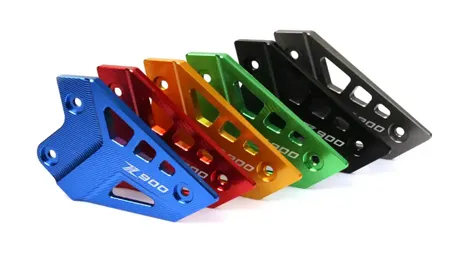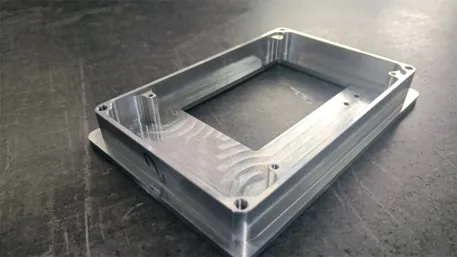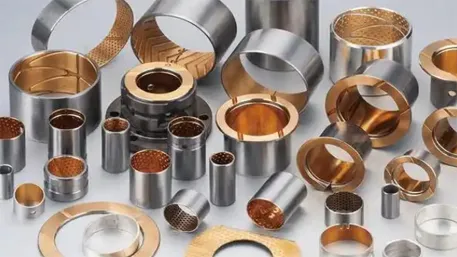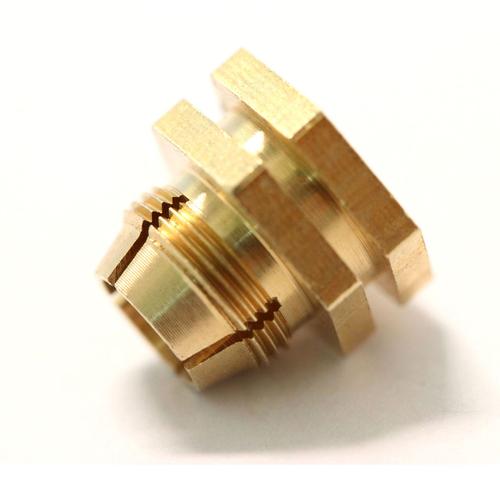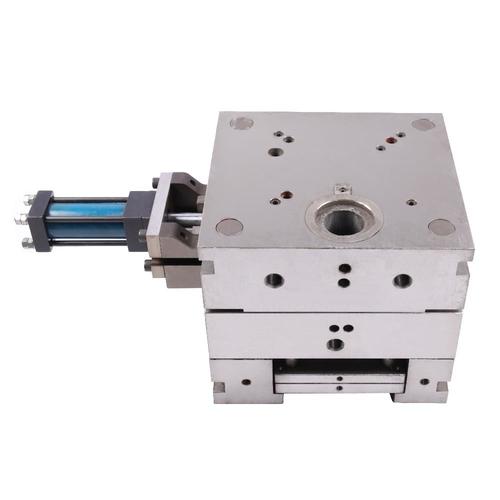
- Demand Analysis & DFM (Design for Manufacturability)
- 3D CAD Design & Simulation
- Mold Material Selection & Cutting
- Rough Machining (Shape the Die Blank)
- Precision Machining (EDM/Wire EDM for Cavities)
- Heat Treatment (Harden the Die)
- Surface Finishing & Die Assembly
- Die Tryout & Optimization
Step 1: Demand Analysis & DFM (The Foundation of a Good Die)
Key Tasks:
- Clarify Part Specifications:
-
- Material (aluminum/zinc/magnesium): Determines die material (e.g., aluminum needs heat-resistant H13 steel).
-
- Tolerance (±0.05mm vs. ±0.1mm): Defines machining precision (tighter tolerances need Wire EDM).
-
- Volume (10k vs. 1M parts): Multi-cavity dies for high volume; single-cavity for low volume.
-
- Critical Features: Undercuts (need slides), thin walls (≥0.8mm for aluminum) that affect cavity design.
- DFM Review (Critical for Cost & Quality):
-
- Optimize part design to simplify the die: Remove unnecessary undercuts (replace with post-machining), add draft angles (1–3° for easy ejection), and ensure uniform wall thickness (avoid >5mm sections to prevent porosity).
-
- Match die size to the die casting machine: Check platen size (die must fit between moving/fixed platens) and maximum clamping force (die weight + injection pressure can’t exceed machine capacity).
Tools & Output:
- Software: SolidWorks, AutoCAD (for part analysis); DFM software (e.g., Sigmetrix) for design validation.
- Output: A DFM report with optimized part design and die feasibility assessment.
Common Mistake:
Step 2: 3D CAD Design & Simulation (Digital Prototyping)
Key Tasks:
- Design Die Components:
-
- Cavity: 3D model of the part (add 0.1–0.2mm shrinkage allowance—aluminum shrinks ~1.2% when cooling).
-
- Gating System: Design sprue (main channel), runners (distribute metal), and gates (control flow speed: 5–15 m/s for aluminum). Overflows (1–2x gate size) catch impurities.
-
- Cooling System: Embed water channels (6–10mm diameter) 8–15mm from the cavity—ensure uniform cooling (temperature variation <5°C to avoid warping).
-
- Ejection System: Place ejector pins (3–6mm diameter) in low-stress areas (e.g., part edges) to avoid visible marks.
- Flow Simulation:
-
- Use software like ANSYS Fluent or MAGMAsoft to simulate molten metal filling the cavity:
-
-
- Check for air traps (fix with larger vents: 0.1–0.3mm wide).
-
-
-
- Identify cold shuts (when metal streams don’t merge—increase gate size or flow speed).
-
Tools & Output:
- Software: SolidWorks 3D, AutoCAD Mechanical; Simulation tools (ANSYS, MAGMAsoft).
- Output: A fully annotated 3D die model (with BOM: Bill of Materials) and simulation report.
Critical Check:
Step 3: Mold Material Selection & Cutting
Material Selection Guide:
|
Die Material
|
Alloy Compatibility
|
Hardness (HRC)
|
Heat Resistance
|
Lifespan (Cycles)
|
Best For
|
|
H13 Tool Steel
|
Aluminum, Magnesium
|
44–48 (after heat treatment)
|
Up to 650°C
|
500k–2M
|
High-volume, high-temperature casting
|
|
P20 Pre-Hardened Steel
|
Zinc
|
28–32 (pre-hardened)
|
Up to 450°C
|
1M–5M
|
Mid-volume zinc casting (cheaper, easier to machine)
|
Material Cutting:
- Process: Use a bandsaw or CNC cutting machine to cut the steel block (die blank) to the required size (e.g., 300x400x200mm for a small die).
- Precision: Cut with ±1mm tolerance—enough for rough machining later.
Common Mistake:
Step 4: Rough Machining (Shape the Die Blank)
Key Tasks:
- Machine Fixed/Moving Die Blanks:
-
- Use a CNC vertical machining center (VMC) (e.g., Haas VF-4) with a 10,000 RPM spindle.
-
- Cut the die’s outer 轮廓 (outline) to match the 3D model, and drill pilot holes for cooling channels (oversized by 1mm for later finishing).
- Mill Gating System Pockets:
-
- Cut slots for the sprue and runners (leave 0.5–1mm 余量 for precision machining).
Tools & Parameters:
- Cutting Tools: Carbide end mills (4–12mm diameter) for steel; coolant (water-soluble oil) to prevent overheating.
- Speeds & Feeds: 150–250 SFM (surface feet per minute) for H13 steel; 250–350 SFM for P20 steel.
Critical Check:
Step 5: Precision Machining (EDM/Wire EDM—The “Heart” of Die Making)
A. EDM (Sinker EDM) for Cavities & Deep Features
- How It Works: Uses an electrode (copper or graphite) to erode the steel via electrical sparks (50–100V, 1–100A). The spark gap (0.01–0.05mm) controls precision.
- Key Tasks:
-
- Machine the cavity: Use a graphite electrode shaped like the part (enlarged by 0.02–0.03mm to account for spark gap).
-
- Cut undercuts: Use a “collapsible electrode” for internal undercuts (e.g., pipe fittings).
- Equipment: Sodick AQ35L, Makino EDNC65.
- Parameters:
-
- Rough EDM: High current (50–100A) for fast material removal (surface finish Ra 12.5–25 μm).
-
- Finish EDM: Low current (1–5A) for precision (Ra 0.8–3.2 μm)—matches the part’s required surface finish.
B. Wire EDM for Thin Walls & Precision Holes
- How It Works: Uses a thin brass wire (0.1–0.3mm diameter) to cut through steel via electrical discharge—ideal for straight edges, thin walls (≥0.5mm), and holes (≥0.2mm diameter).
- Key Tasks:
-
- Cut ejector pin holes (±0.001mm tolerance).
-
- Machine slide components for undercuts (must be parallel to the die’s opening direction).
- Equipment: Fanuc Robocut α-C400iB, Mitsubishi MV2400S.
- Parameters: Wire speed 5–15 m/min; spark gap 0.01–0.02mm.
Critical Check:
Step 6: Heat Treatment (Harden the Die for Durability)
Process for H13 Tool Steel (Most Common):
- Preheat: Heat to 650–750°C for 2–3 hours (reduces thermal shock).
- Austenitizing: Heat to 1020–1050°C for 1–2 hours (converts steel to austenite).
- Quenching: Cool rapidly in oil (100–150°C) to form martensite (hardens the steel to HRC 58–62).
- Tempering: Heat to 520–580°C for 2–4 hours (reduces brittleness while retaining hardness—final HRC 44–48).
-
- Note: Temper twice (double tempering) to eliminate residual stress.
Process for P20 Steel:
- P20 is pre-hardened at the factory (HRC 28–32), so only stress relief annealing is needed: Heat to 550–600°C for 1–2 hours, then cool slowly (prevents warping after machining).
Common Mistake:
Step 7: Surface Finishing & Die Assembly
A. Surface Finishing:
- Polishing:
-
- Use abrasive stones (80–1200 grit) to polish the cavity to Ra 0.8–1.6 μm (smooth surface = no part sticking).
-
- For cosmetic parts (e.g., die cast model cars), polish to Ra 0.2–0.4 μm (mirror finish).
- Deburring:
-
- Remove burrs from EDM cuts (use a CNC deburring machine or manual tools) to avoid damaging the part during ejection.
- Corrosion Protection:
-
- Coat non-cavity surfaces with anti-rust oil (e.g., Mobil Vactra Oil) to prevent oxidation during storage.
B. Die Assembly:
- Install Components:
-
- Ejection system: Mount ejector pins, plates, and springs (ensure pins move smoothly—no binding).
-
- Cooling system: Install O-rings in cooling channels to prevent water leakage.
-
- Slides (if needed): Attach hydraulic cylinders to slides (align to ±0.01mm to avoid cavity misalignment).
- Align Fixed/Moving Dies:
-
- Use guide pins (4–6mm diameter) to align the two die halves—gap between dies must be <0.01mm (prevents metal flash).
Critical Check:
Step 8: Die Tryout & Optimization (Validate Before Mass Production)
Key Tasks:
- Mount the Die:
-
- Secure the fixed die to the machine’s stationary platen and moving die to the movable platen—use bolts torqued to 50–100 N·m (prevents die movement during injection).
- Set Process Parameters:
-
- Injection temperature: 650–700°C for aluminum; 380–420°C for zinc.
-
- Injection pressure: 5,000–10,000 psi for aluminum; 1,000–3,000 psi for zinc.
-
- Cooling time: 10–30 seconds (part must be solid enough to eject without deformation).
- Produce Test Parts (50–100 Units):
-
- Inspect for defects:
-
-
- Porosity (air bubbles): Widen vents or use vacuum die casting.
-
-
-
- Flash (excess metal): Tighten die clamping force or fix guide pin alignment.
-
-
-
- Warping: Adjust cooling channels (add more near warped areas).
-
-
-
- Undersized parts: Increase cavity size by 0.05–0.1mm (account for shrinkage).
-
Tools & Output:
- Inspection Tools: CMM (for dimensions), X-ray machine (for internal porosity), hardness tester (for part strength).
- Output: Optimized die + validated process parameters (ready for mass production).
Common Mistake:
Key Quality Control (QC) Nodes (Must Not Skip)
- After 3D Design: DFM audit (2+ engineers sign off).
- After Rough Machining: CMM check (±0.2mm tolerance).
- After Precision Machining: CMM cavity measurement (±0.005mm).
- After Heat Treatment: Hardness test (HRC 44–48 for H13).
- After Tryout: X-ray porosity test (<2% porosity for structural parts).
How to Choose a Die Maker (Avoid Low-Quality Dies)
- ISO 9001 Certification: Ensures consistent process control.
- Industry Experience: 5+ years in your niche (e.g., automotive die casting vs. toy die casting).
- Equipment List: In-house EDM/Wire EDM (not outsourced—faster lead times).
- Tryout Capabilities: Owns a die casting machine (can test the die before delivery).
Final Takeaway
- Starting with a DFM-optimized part design.
- Using the right material (H13 for aluminum, P20 for zinc).
- Investing in precision machining (EDM/Wire EDM) and thorough tryout.



